
[Canadian academic Dr. John Ryan first published this article in Global Research in July of 2006, just before the fifth anniversary of the Afghan War. Originally titled “Afghanistan: A Tale of Never-Ending Tragedy,” this article—with a new introduction by Steve Brown—retains its relevance 15 years later as media pundits try to forestall the U.S. departure from Afghanistan, the site of America’s longest war.—Editors]
Introduction
By every measure, the Afghan War has been a failure for America. But it has been a $5 trillion success for American corporations like Lockheed Martin, DynCorp, General Dynamics, Black & Veatch, Halliburton and the oil companies which shipped half-a-million gallons of fuel a day for our army to run on, as well as the military contractors (including suppliers of mercenaries such as Blackwater), whose workers outnumbered soldiers in Afghanistan by three to one.
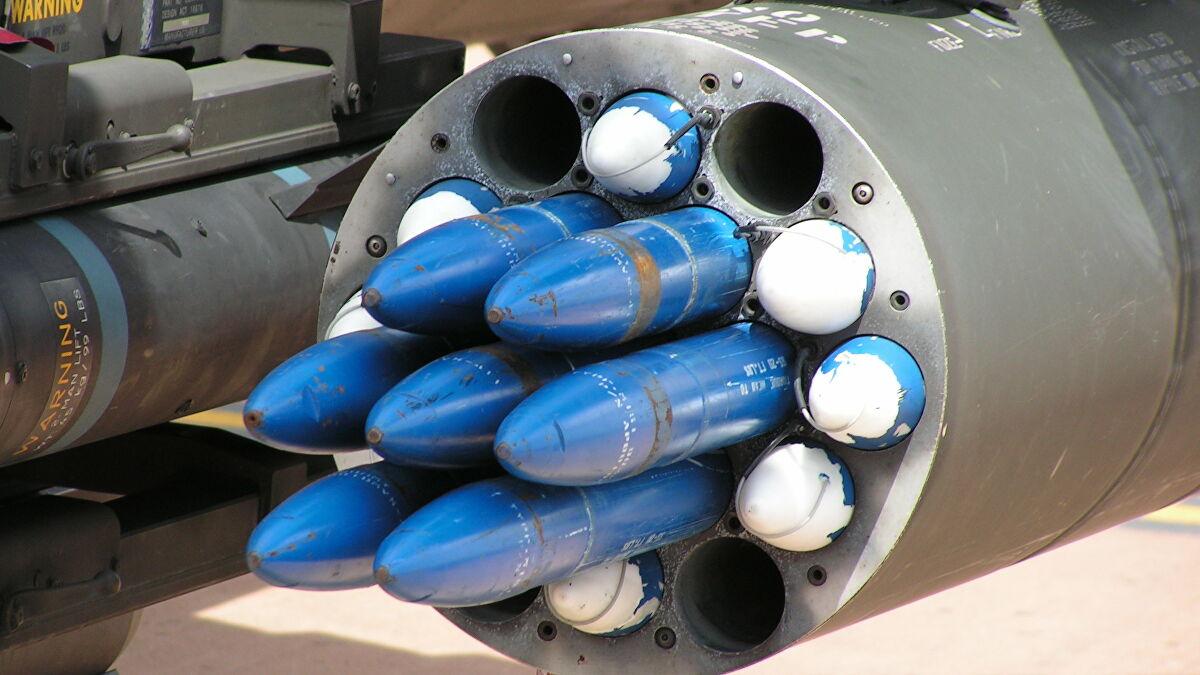
The Afghan War was a great boon to arms manufacturers like General Dynamics which manufactured these Hydra rockets that were used by the U.S. army in the fight against the Taliban. [Source: sputniknews.com]
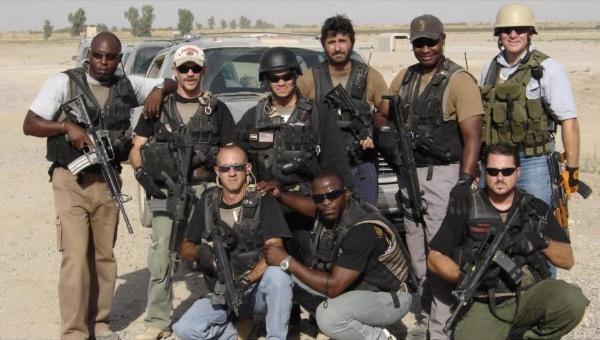
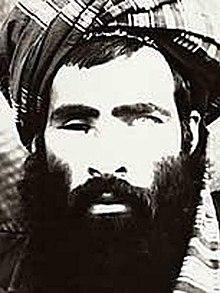
Before the U.S. invasion, Taliban leader Mullah Mohammed Omar had been working diligently with the UN to wipe out heroin production in his country. (He thought it was “un-Islamic.”) And he actually did wipe it out. In what must surely be the world’s most successful “war on drugs,” he reduced poppy farming and opium production by an astonishing 99% in less than 13 months.
Unfortunately for the world, after the U.S. invaded Afghanistan in 2001 and overthrew the Taliban, a succession of corrupt puppet governments installed by the U.S. proceeded to resuscitate and supercharge the profitable production of opium to such an extent that Afghanistan now provides 90% of the entire global opium supply (which then gets distributed by the Kosovo Albanians, another “narco-state” created and controlled by the U.S.)
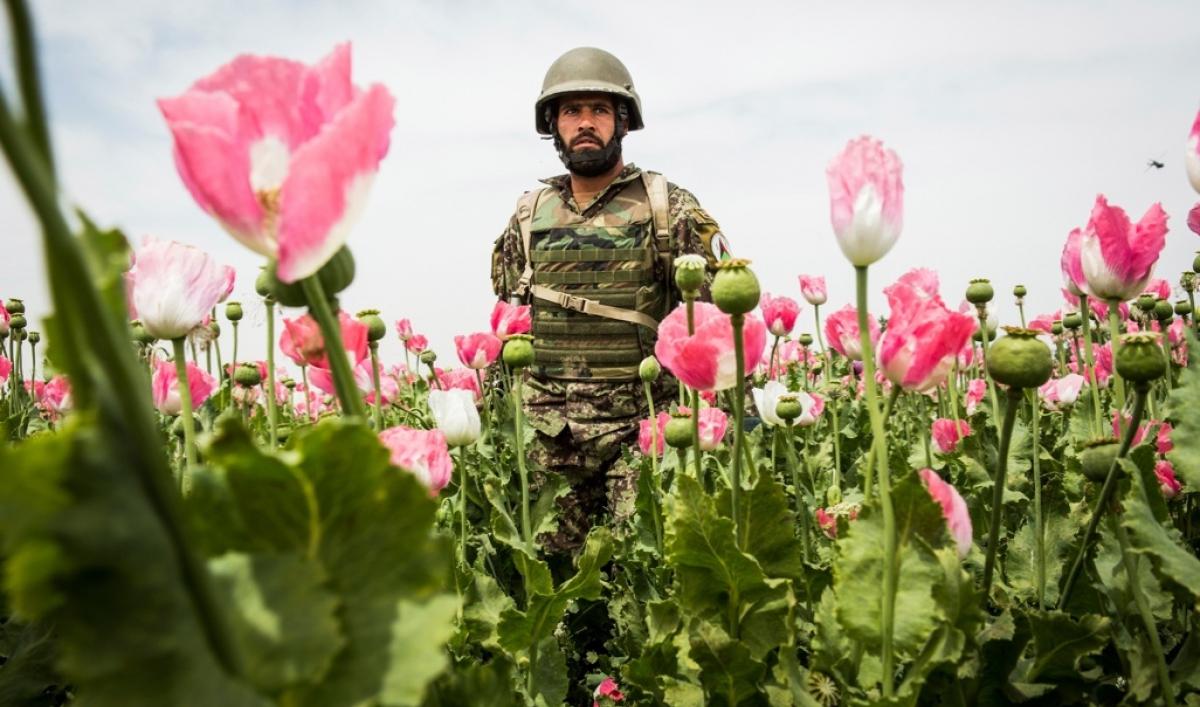
This is among the key legacies that U.S. troops will leave behind as they depart—though as CAM has previously reported, the war will actually go on via proxy as the U.S. plans to continue bombing Afghanistan from outside air bases, while pouring in billions of dollars annually to fund the Afghan army.
It’s now approaching five years since the Taliban government in Afghanistan was deposed by American bombing and the reoccupation of the country with the former mujahedeen and so-called regional warlords, together with invading U.S. troops. So what has happened in this almost five-year period?

Actually, there’s little evidence of any fundamental change, and in a number of respects, conditions have gotten worse. Other than some improvements in Kabul, little has been done to rebuild the country’s infrastructure, which was almost totally destroyed over a 20-year war period. About half the population is unemployed.
Most farmers struggle to make a living and some have resorted to the growing of poppies for opium and heroin, which are processed and shipped out of the country by the warlords or their agents – with little interference by U.S. forces or the Afghan army or police.
Instead they harass the farmers now and then. Afghanistan now produces about 90 percent of the world’s opium, some of which is later distributed by the Kosovo Albanians – another “liberated” state by the Americans. More than half the GDP in both areas comes from opium and heroin. So the Americans have produced two full-blown narco-states, both under their protection.

When the Taliban regime was first removed, many Afghan women celebrated by removing their burqas—now only a few brave souls in Kabul dare to be seen without the burqa. The Sharia law, with only minor modifications, is still in effect. Under the dreaded Taliban, at least the roads and villages were safe for both Afghans and foreigners alike, whereas now the lawlessness, fear and chaos of the mid 1990s has returned. What’s going on here?

Actually the present conditions are hardly a surprise since the new government, albeit supposedly elected, as well as many of its officials and staff includes a massive preponderance of the old mujahedeen—many of whom are accused of orchestrating massacres, torture, mass rape and other war crimes. A 220-page UN report, a copy of which was recently obtained by the Guardian,[1] details the atrocities and the names of many of the people currently in office who were involved.
The report, still not released, has been mysteriously shelved since January of 2005. So is this a case of the UN, perhaps under pressure from the USA, trying to shield the disreputable nature of the Karzai government?
Most Afghan people however must be fully aware of the situation so it is little wonder that the government survives merely because of its American Praetorian Guard. If the government is to gain the respect of the Afghan people, it is crucial that this report be made public and that action be taken. The individuals charged with crimes should be prosecuted, if possible, and at the very least, they should be thrown out of office.
It must be recalled that the mujahedeen had been initially created by the CIA to fight the USSR. They were later defeated by the Taliban and were confined to about 10 percent of the country in the north.
But in 2001 they were recruited by the USA as allies, and were renamed “the Northern Alliance,” and so they came back in the wake of U.S. bombing to take over the country. But these people are basically the same as the Taliban, just a different variety.
![CIA's Afghan Kill Teams Expand U.S. War in Pakistan [Updated] | WIRED](https://covertactionmagazine.com/wp-content/uploads/2021/08/ciaand39s-afghan-kill-teams-expand-u-s-war-in-pak-1.jpeg)
These new found “allies” who helped to rout the Taliban are the same forces that had routed the Soviet army in the 1980s. And they are also the forces who, upon defeating the Afghan Marxist government in 1992, launched a campaign of rape and pillage, and the torture and execution of government supporters, then turned their guns on one another.
In the ensuing four-year fratricidal war more than 50,000 people were killed and Kabul was reduced to the ruins of a Stalingrad—and it’s still largely in that condition.
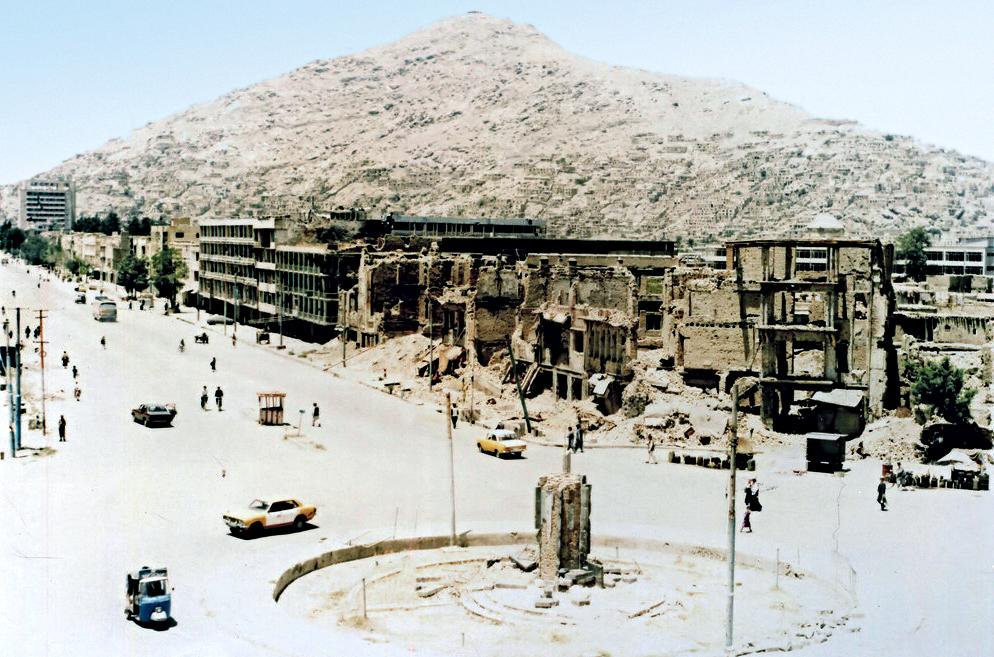
It was in opposition to these ongoing mujahedeen wars and lawlessness that the Taliban appeared in 1994—they were a creation of madrasa religious schools in Pakistan, and their creation had the support of the USA.
In desperation, Afghan people supported them, hoping for some form of stability, but once in power the Taliban brought in a reign of Islamist terror, especially on women.
They imposed an ultra-sectarian version of Islam, closely related to Wahhabism, the ruling creed in Saudi Arabia. And now by a twist of fate, the old mujahedeen are back—it’s one tragedy after another — and for most Afghans it’s just a change of devils.
Through a series of events, including an election, Hamid Karzai, allegedly a former consultant to Unocal Oil,[2] is president, but if the Americans left, he and his government wouldn’t last a day.
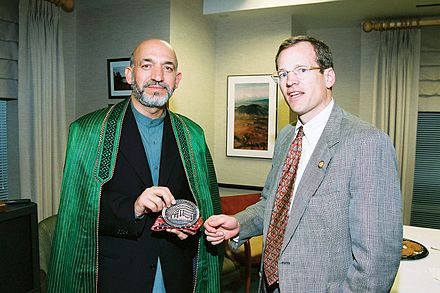
Zalmay Khalilzad, also a former consultant to Unocal Oil and initially the U.S. envoy to Afghanistan (now the U.S. ambassador to Iraq), managed as one of his first actions to have Afghanistan, Pakistan, and Turkmenistan sign a detailed agreement on May 30, 2002, for the construction of a multi-billion dollar pipeline for the shipment of natural gas.[3]

This had always been a major priority for the U.S. government and it probably was a significant factor in the takeover of the country. However, because of the continuing anarchy, work on the pipeline has not started.
Lost Progressive Era
What I find astounding is that the Western media never mention that for a brief period of time Afghanistan once had a progressive secular government, with broad popular support. It had enacted progressive reforms and gave equal rights to women. It was in the process of dragging the country into the 20th century, and as British political scientist Fred Halliday stated in May 1979, “probably more has changed in the countryside over the last year than in the two centuries since the state was established.”[4]
It would now be the type of government that most people in Afghanistan and the West would probably welcome. What happened to this government? Long before the Soviet Union entered the scene, this government was undermined by the CIA and the mujahedeen, which triggered a series of tragic events that destroyed the country—and ironically led to the disaster of September 11 in the USA, and to the present chaos and tragedy in Afghanistan.
I was fortunate enough to be in Afghanistan in November of 1978, six months after this progressive government came to power. I travelled from Peshawar through the Khyber Pass to Kabul and spent a couple of weeks in the city and the surrounding rural area.
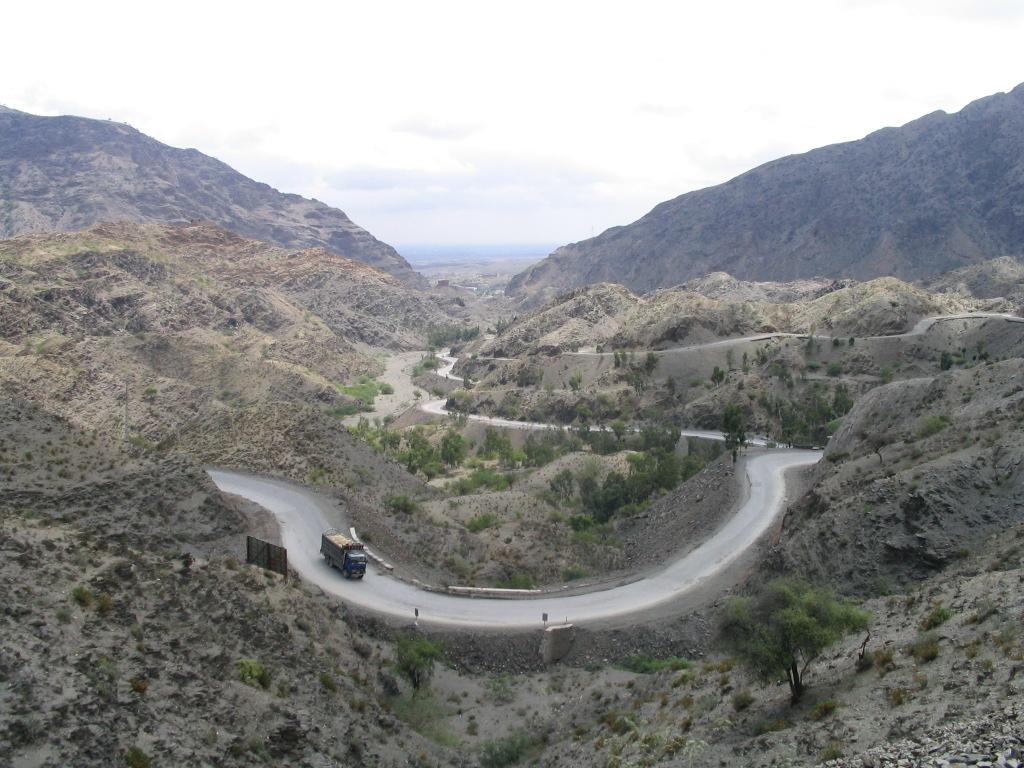
While on a sabbatical leave as a professor from the University of Winnipeg, I had been in Asia for almost a year on an agricultural research project, conducting documentary case studies of farms — 70 studies in 12 countries, starting in Japan and ending with 4 farms in Afghanistan.
Although this government had come to power by means of revolution, surprisingly, it was a peaceful time, and I received full cooperation from government authorities and the Faculty of Agriculture at Kabul University. While at the University, the Dean and a number of professors briefed me on Afghanistan’s history, its economic conditions, and the causes of the revolution.
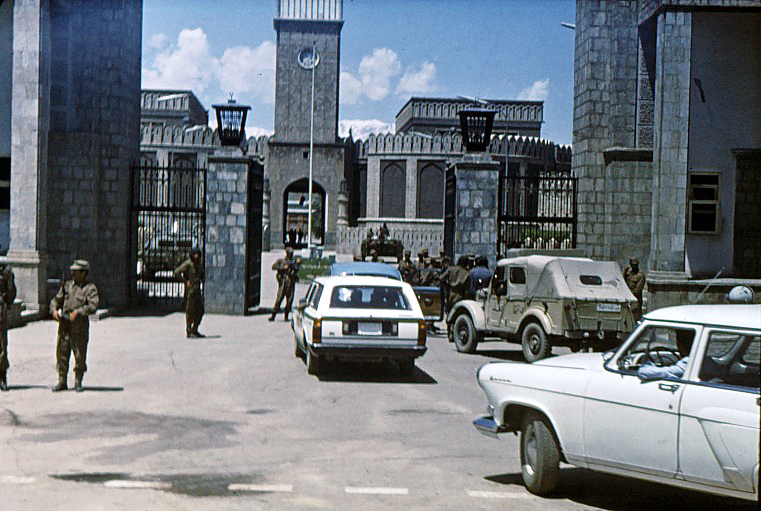
According to the Dean and the professors, the bulk of Afghanistan’s people in the 1970s were farmers, but the landholding system hadn’t changed much since the feudal period. More than three-quarters of the land was owned by landlords who composed only 3 percent of the rural population.
Most landless peasants worked the land as sharecroppers. The landlord took two-thirds of the crop in the less fertile areas, and in the fertile plains four-fifths. In either case, the sharecropper was left with just barely enough grain to feed his family.[5]


Partly because of these terrible rural conditions, the king was deposed in 1973, but no land reform came about, and the new government was autocratic, corrupt, and unpopular.
On April 27, 1978, in the wake a huge demonstration in front of the presidential palace, the army came to the support of the people and, after a brief battle with the presidential guard, the government was deposed.

The military officers then released jailed Marxist leaders and invited their party to form the government, under the leadership of Noor Mohammad Taraki, a university professor, writer, and poet. The military supported the Marxists because they were the only ones who had a program for land reform and progressive social and economic reforms.

This is how a Marxist government came into office—it was a totally indigenous happening—not even the CIA blamed the USSR for this. In fact, the Soviets were much surprised at what happened. The government began to bring in much needed reforms; some were controversial but most had popular support.
It affirmed the separation of church and state, labor unions were legalized, health care and education became priorities, women were given equal rights, and girls were to go to school. Child marriages and feudal dowry payments were banned.
On September 1, 1978, there was an abolition of all debts owed by farmers—landlords and moneylenders had charged up to 24 percent interest. A program was being developed for major land reform, and it was expected that all farm families (including landlords) would be given the equivalent of equal amounts of land.[6]
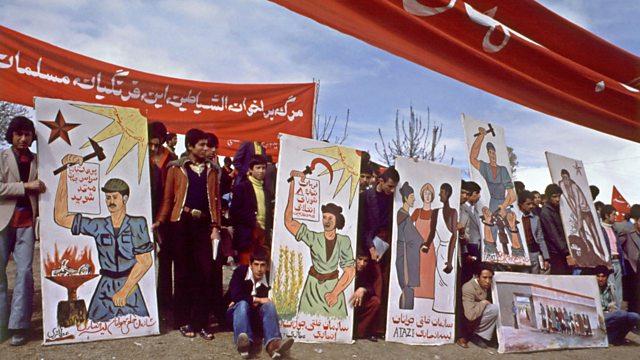
Through Kabul University I conducted my research project with the assistance of an agriculture professor. I spent more than a week in the countryside and talked with many farmers. The farmers produced a variety of food crops and livestock and Afghanistan was basically self-sufficient in food production.
Unlike the opium poppy fields I witnessed in northwestern Pakistan, none were to be seen in Afghanistan—in fact, raisins were an important export crop. Opium poppy production was introduced to Afghanistan by the CIA-led mujahedeen for the purpose of helping to finance their offensive on the government, and poppies have continued to be grown.[7]
Because the farmers had much to gain from the reforms, most were extremely pleased with the new government. I heard tearful tales of how the farmers had lost their land because of inability to repay loans. In this manner almost half of the country’s farmers wound up with their houses on land that became the property of landlords. Also, many of these people had debts that were inherited from their fathers and grandfathers, and they had never expected to repay them.
Several of them told me that the law abolishing these debts was like a gift from heaven. Later, in talks with shopkeepers in Kabul, I discovered that they too were pleased.
One of them told me that he wasn’t quite sure how the government leaders could be Marxist and Muslim, but they hadn’t interfered with their religion,[8] and because the farmers now had money, business was increasing and they had no complaints.
From what I could see, life was peaceful and there were few police and soldiers on the scene— and women were free to dress as they wished. I have a slide of a scene at a bus stop showing a woman in a burqa, another in a Western-style dress, a man in a business suit, another in casual clothes, and one in traditional robes and the distinctive Afghan turban. Such cosmopolitan scenes were quite typical.

Without question, this appeared to be a genuinely popular government and people seemed to look forward to the future. Admittedly, the issue of women’s rights and education for girls was controversial, and fundamentalist mullahs (clerics) conducted campaigns against this.
CIA-Sponsored Counter-Revolution, 1980s War and Destruction of Afghanistan
Moreover, many of the 250,000 mullahs were landlords and they vehemently opposed the proposed land reforms. In the mosques they exhorted the farmers to oppose the government’s plans because according to them it was only Allah who could grant land to them.[9]
It was largely these people and their converts, along with other landlords and moneylenders, who migrated to Pakistan, as so-called refugees. These were the people who not only opposed land reform but all the other social and economic reforms as well.
But there was a much more powerful opponent to the government—it was the USA that objected to it because it was a so-called Marxist government.
At first unofficially, but officially after July 3, 1979 with President Carter’s authorization, the CIA, along with Pakistan and Saudi Arabia, began to provide military aid and training to the Muslim extremists, who became known as the mujahedeen and “freedom fighters.” In fact, Ronald Reagan stated that they were “the moral equivalent of the Founding Fathers of America.”[10]

The second phase of the U.S. counter-revolution strategy involves a man named Hafizullah Amin. During the 1960s while studying at Stanford University or during later visits to the USA, he appears to have been recruited by the CIA, and came back to Afghanistan, pretending he was a hard-line Marxist. Through him the CIA infiltrated the Taraki government. This has never been officially acknowledged, but there is substantial evidence to support this view.[11]
Regardless of the documentation on this matter, his actions while in office reflect exactly what a CIA agent would have been expected to do. He cleverly worked his way to the top—first becoming defense minister and later the prime minister. In September of 1979 he carried out a coup, took over the government, had Taraki killed, and all of Taraki’s loyal supporters were killed, jailed, or exiled.
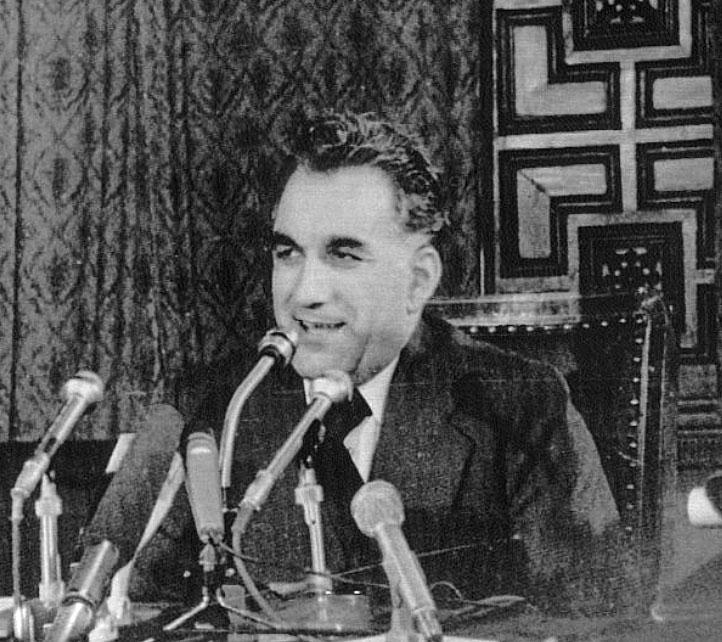
Amin then proceeded to undermine and discredit the Marxist government. He enacted draconian laws against the Muslim clergy, to purposefully further alienate them. The progressive reforms were halted and thousands of people were jailed. Senior army officers were demoted, jailed or killed, and in that way he weakened the Afghan army.
In the meantime, the CIA’s trained and armed mujahedeen came in by the thousands to attack parts of the country, especially to destroy health clinics and schools and to kill teachers. Teachers found with girls in a classroom would be killed and sometimes disemboweled in the presence of the children.
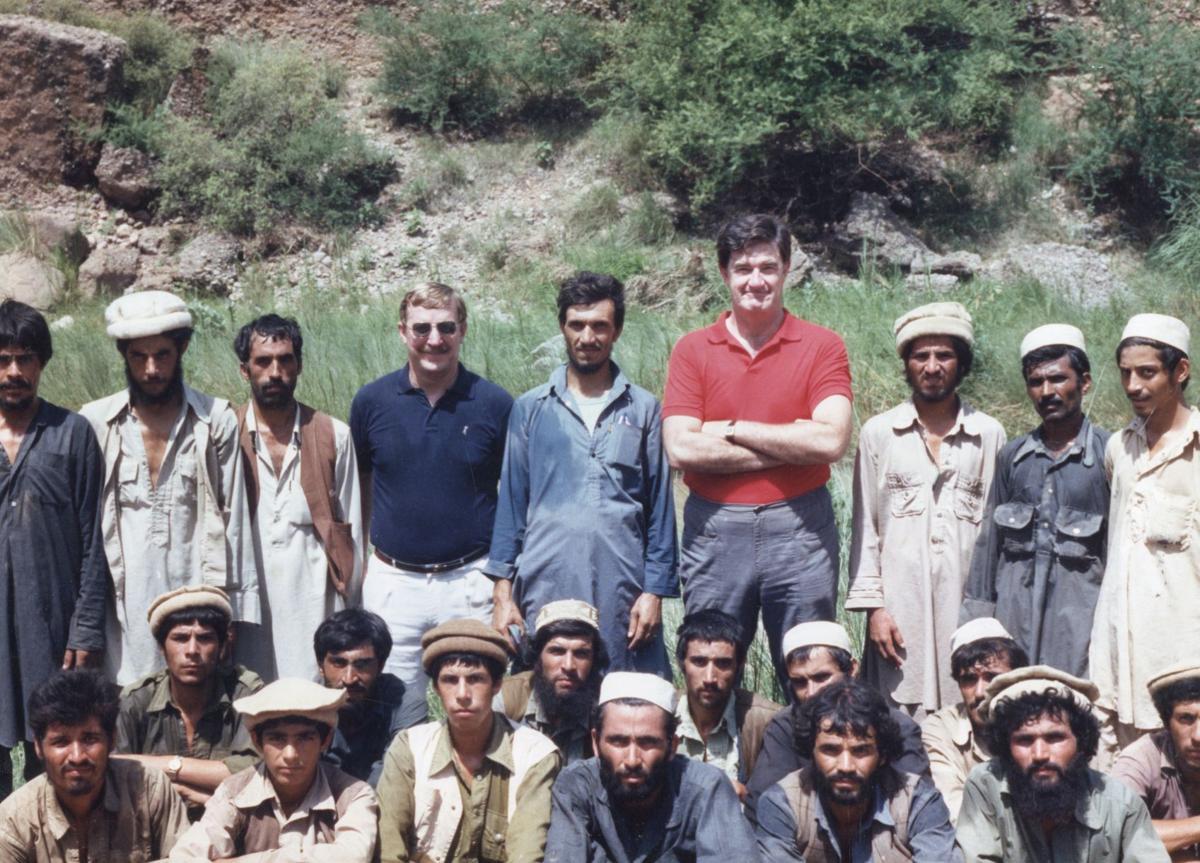
In a matter of three months, with the combined actions of the mujahedeen and the counterproductive policies of Amin, the Marxist government was almost destroyed. It’s a matter of record that during this time Amin held numerous meetings with the American charge d’affaires and other U.S. officials.[12] He also sent emissaries to hold secret meetings with the top mujahedeen leader in Pakistan, Gulbuddin Hekmatyar.[13]

Apparently Amin had laid plans for a further coup d’état to eliminate all progressive elements in the government and then join forces with the mujahedeen—to form a fundamentalist Islamic state, with himself as president and Hekmatyar as prime minister.[14]
But at the end of December in 1979, Amin was overthrown and killed either by a regiment of the Afghan army that still had Taraki supporters or by Soviet soldiers—the truth still being difficult to establish.
The usually accepted version is that it was done by the Soviets, but the USSR had always denied it. The fact is that some Soviet troops had been in Afghanistan since December 8, at the Afghan government’s invitation.[15]
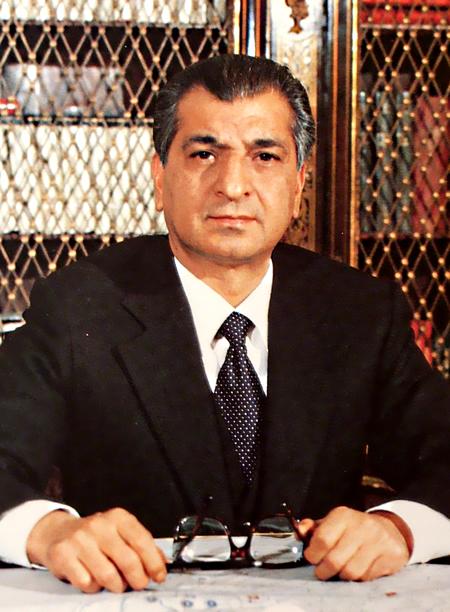
This whole phase has been clouded by Cold War politics and remains a murky issue. With the overthrow of Amin, there was great jubilation and about 10,000 political prisoners were released, and when Babrak Karmal became president (after being in exile in Czechoslovakia), he would have been hailed as a hero, if he had come in on his own.
What soured the situation is the immediate entry of Soviet troops—either on their own initiative or after an official invitation on the basis of a 1978 Afghan-Soviet treaty. Their purpose was to ward off the thousands of well-armed mujahedeen invaders, many being foreign mercenaries.
What’s not widely known is that the USA through the CIA had been actively involved in Afghan affairs for at least a year, and it was in response to this that the Soviets arrived on the scene.
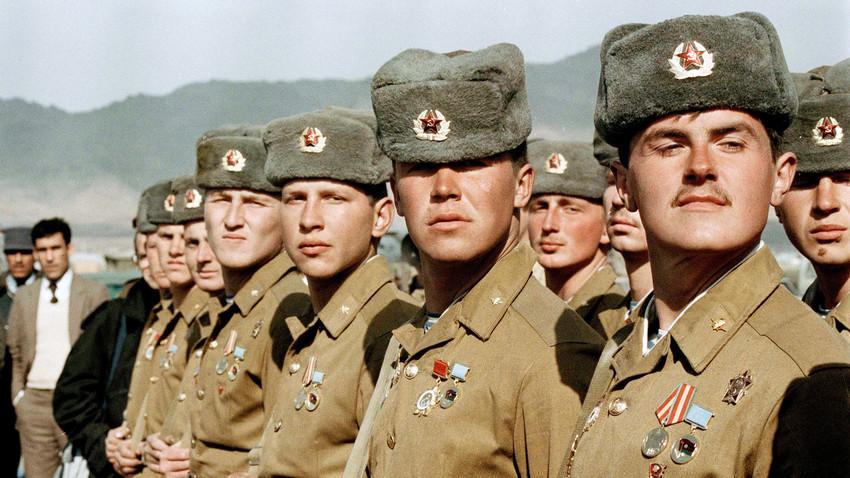
The advent of Soviet troops on Afghan soil tragically set the stage for the eventual destruction of the country. Zbigniew Brzezinski, President Carter’s National Security Adviser, afterwards bragged that he had convinced Carter to authorize the CIA to set a trap for the Russian bear and to give the USSR the taste of a Vietnam war.[16]
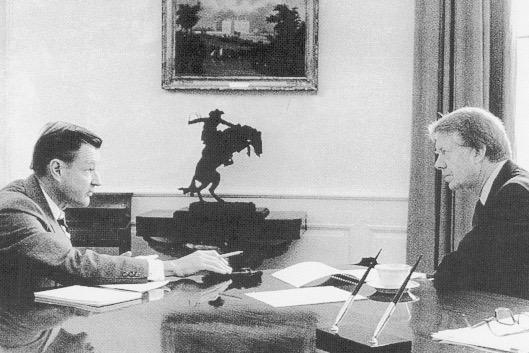
Brzezinski saw this as a golden opportunity to fire up the zeal of the most reactionary Muslim fanatics—to have them declare a jihad (holy war) on the atheist infidels who defiled Afghan soil—and to not only expel them but to pursue them and “liberate” the Muslim-majority areas of the USSR.
And for the next 10 years, with an expenditure of billions of dollars from the USA and Saudi Arabia, and with the recruitment of thousands of non-Afghan Muslims into the jihad (including Osama bin Laden), this army of religious zealots laid waste to the land and people of Afghanistan.
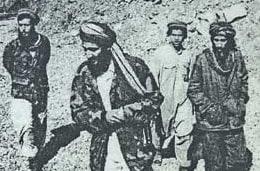
Central Asia specialist Ahmed Rashid wrote: “With the active encouragement [a classic understatement!] of the CIA and Pakistan’s ISI [Inter Services Intelligence] who wanted to turn the Afghan jihad into a global war, waged by all Muslim states against the Soviet Union, some 35,000 Muslim radicals, from 40 Islamic countries joined Afghanistan’s fight between 1982-1992. Tens of thousands more came to study in Pakistani madrasahs. Eventually more than 100,000 foreign Muslim radicals were directly influenced by the Afghan jihad.”[17]
The CIA covertly trained and sponsored these warriors. It should be understood that Afghan people don’t have a history of being religious zealots. To create the CIA-desired jihad required the recruitment of Arab, Egyptian, and Pakistani extremists—so the fundamentalism that emerged in Afghanistan is a CIA construct. Although Reagan referred to the mujahedeen as “freedom fighters,” they committed horrific atrocities and were terrorists of the first order.[18]

The Soviets succumbed to their Vietnam and withdrew their troops in February of 1989, but the war raged on. Somehow it is generally thought that the Afghan Marxist government collapsed as soon as the Soviets left, but that’s not true.
Seeing the viciousness of the mujahedeen, a large portion of the Afghan population, especially the women, supported the quite moderate Najibullah government, and without a single Soviet soldier on their territory, they fought on for another three years. In fact, their government outlasted the USSR itself, which collapsed in December of 1991.

In reality, at this critical time, the crucial factor that undermined the Afghan government was treachery primarily by the Americans but also by the Soviets. When the Soviets agreed to pull out their troops, it was on the understanding that both the USSR and the USA would stop all military and economic aid to Afghanistan.
The Soviets honored the agreement, while being aware that the USA, Pakistan, and Saudi Arabia continued to support the mujahedeen.
It is reasonably certain that if after 1988 the Soviets, out of some sense of fairness and justice, had provided the Afghan government with a minimum amount of economic and military aid, they could have withstood the mujahedeen attacks.[19]
1990s Civil War and Rise of the Taliban
As it was, because of the unending supply of superior American weapons and no economic assistance, the Marxist government was finally defeated in April of 1992.
The victorious mujahedeen, who now form a major part of the current Afghan government, first of all slaughtered the members of the previous secular government and thousands of progressive-minded people.
Then for the next four years they fought amongst themselves and conducted looting and rape campaigns until the Taliban routed them and captured Kabul in September of 1996.
During the years of war, Kabul was totally destroyed, as were most other cities—with the greatest damage occurring after the Marxist defeat during the internecine fratricidal conflict.
The Taliban, who “liberated” the country from the mujahedeen, established an atrocious reactionary regime. The landlords had come back immediately after the mujahedeen victory, and when the Taliban took over, a virtual war was declared on women, which had no basis in Islamic law.

Thousands of women were dismissed from their jobs as teachers, doctors, professors and work of all kinds. They were then not allowed to participate in the work force or even have doctors treat them (without a male relative present), and girls were forbidden to go to school. Terror, in all its forms, became the basis of the regime—a regime of fascist Muslims, but it was a regime that was kept in power largely by Pakistan.
Despite the atrocities of the regime, they initially had support in the Clinton administration because it was thought that the Taliban would bring in “stability” which would enable the construction of oil and natural gas pipelines through the country.
Moreover, the current Bush administration provided $124 million in aid to Afghanistan and continued pipeline talks almost until the fateful September 11.[20]

So who is to blame for this Afghan tragedy? Obviously, it’s both the USA and the USSR. What stupidity for the Soviets to send in troops to try to salvage a Marxist regime that was under attack by hordes of religious fanatics.
Their mere presence on Afghan soil intensified American resolve and mujahedeen fanaticism. If the Soviets had simply provided weapons for the Afghan Marxist government, they may have survived the “barbarians at the gates”—because ordinary Afghan people were not fanatics and they had supported the government’s progressive reforms.
And even if they lost to the mujahedeen, in time they may have prevailed and restored a progressive secular government. After all, they had put in the initial Marxist government in 1978—totally on their own.
The protracted war and the complete destruction of the country enabled the Taliban to impose a Nazi-type regime on the population, leaving ordinary Afghan people feeling defeated . . . and without hope.
But if the Soviets are to blame, how about the USA, Saudi Arabia, and Pakistan?
The progressive economic and social reforms that the Taraki government brought in—which also brought women and girls into the 20th century—were opposed and reviled by the USA, because this had been a so-called Marxist government.
The U.S. “communist paranoia” and their policy to undermine the USSR was such that they supported and recruited the most reactionary fanatic religious zealots on the earth—and used them as a proxy army to fight communism and the USSR—in the course of which Afghanistan and its people were destroyed.
As for the mujahedeen that this conflict created, they took on a life of their own, and have now spread throughout the Muslim world and are apparently in cells everywhere. About 5,000 of them were brought into Bosnia to fight the Serbs—even Osama bin Laden may have visited Bosnian President Alija Izetbegović in 1992.[21]

The mujahedeen later went on to help the Kosovo Albanians. But most significantly, having defeated what they called Soviet imperialism, they have now turned their sights on what they perceive to be American imperialism, particularly its support for Israel at the expense of the Palestinians and its attacks on Muslim lands.
For decades the U.S. has interfered in the affairs of countless countries in the world—Afghanistan is only a case in point. And all the while, U.S. foreign policy makers felt that they could act without any adverse consequences to the U.S. land and its people. They were a superpower, and they felt invulnerable.
But now, ironically, a creation of their own making has turned on them—and despite America’s overwhelming technological, economic, and military power, this force has shown that America is vulnerable. So foreign policy decisions do have consequences, but despite what has happened, this truism still hasn’t sunk in.
If we are to learn anything from the Afghanistan tragedy, it is important to understand that if the USA had left the Marxist Taraki government alone, there would have been no army of mujahedeen, no Soviet intervention, no war that destroyed Afghanistan, no Osama bin Laden, and no September 11 tragedy in the USA.
9/11 and the Fraudulent Pretexts for War
But what about the events after September 11, 2001? After the trauma of the 9/11 assault, what should have been the rational response? Clearly, this was a criminal act, but it was not an act of war by some foreign government.
If the U.S. had any evidence linking Osama bin Laden or anyone else to this, they should have taken the necessary steps to have these people brought to the International Criminal Court to be tried as criminals. In fact, the U.S. immediately demanded that the Taliban government surrender Osama bin Laden to them.
In response, the Taliban offered to turn him over to an international tribunal, but only after seeing evidence of his guilt in 9/11.[22]
The U.S. refused to do this, and the actual reason surfaced only recently in an article that cites Rex Tomb, Chief of Investigative Publicity for the FBI, making the astounding statement that “the FBI has no hard evidence connecting bin Laden to 9/11.”[23]

So what was the war on Afghanistan all about if, five years later, the USA still doesn’t have hard proof connecting bin Laden to 9/11? This is an astonishing revelation, but the mainstream media still haven’t picked up on it.
As became known later, the 9/11 plot was hatched in Germany and the Taliban government couldn’t have possibly known anything of it. Moreover, on September 17 bin Laden issued a statement to al Jazeera emphatically denying any involvement in the attack.[24]
Lacking the evidence to indict bin Laden for 9/11 and thereby properly confront the Taliban, it appears that the U.S. relied on brazen sheer bluster to invade Afghanistan to “smoke him out of his cave.”
Then on December 13, 2001, the Pentagon released a videotape, fuzzy and dark with muffled sound, supposedly of Osama bin Laden in which he gleefully admits his involvement in 9/11.[25]

Almost miraculously and without any explanation, this highly sensitive incriminating tape was reported to have been “discovered” in a private home in Jalalabad.
The authenticity of the tape was challenged immediately, but its fakery was confirmed when an undeniably genuine bin Laden tape appeared on December 27, showing the familiar thin, tall, gaunt man—with readily identifiable facial features.[26]
Commenting on the American invasion and on other matters, bin Laden totally disavowed having anything to do with 9/11. It’s obvious that the FBI rejected the authenticity of the December 13 “confession” as well as other tapes and materials, since they admit, even at this late date, there is no hard evidence to proceed with an indictment on 9/11 charges against bin Laden.
Not having any evidence against bin Laden, the U.S. did not present the case to the United Nations, and so they did not ask for a UN Security Council resolution authorizing them to launch a war on Afghanistan—no such resolution would have been approved.
However, not having Security Council approval didn’t stop the U.S. from bombing Yugoslavia in 1999 and it surely didn’t stop them from attacking Iraq in 2003. After 9/11, what the U.S. government wanted was vengeance, and although a war on Afghanistan was illegal, they went ahead with the war. Since the war was illegal, surely the current occupation is illegal.
Once the war started, intellectual opinion, across the political spectrum in both the U.S. and the UK, assured the public that only radical extremists could doubt that “this is basically a just war.”[27]
Those who disagreed were dismissed, including anti-Taliban Afghans in Europe and in the USA as well as in Afghanistan.

In rare unanimity, all these Afghan groups pleaded with the U.S. government not to bomb or invade the country.
After the bombing started, a large gathering of anti-Taliban Afghans, exiles and from within Afghanistan, gathered in Peshawar. Noam Chomsky cites the New York Times as reporting that this was “a rare display of unity among tribal elders, Islamic scholars, fractious politicians, and former guerrilla commanders.”[28]
They unanimously “urged the U.S. to stop the air raids . . . and the bombing of innocent people” and pleaded with the U.S. to adopt other means to overthrow the Taliban.[29]
They pointed out that the Taliban who ran the country consisted of a small and closed group and without constant assistance from Pakistan and Saudi Arabia the central leadership could be undermined—and once they’d lose the support of their gun-toting rank and file, the regime could be easily overthrown.
So if the Americans wanted a regime change, the Afghan people themselves were fully prepared to do it. All the U.S. had to do was to put pressure on Pakistan and Saudi Arabia to stop their support of the Taliban.
This alternative proposal would have avoided bloodshed and the further destruction of the country, but it was totally ignored—by both the U.S. government and the compliant Western mainstream media. Essentially, what the Americans wanted was an excuse for a war—and never mind the interests of the Afghan people.
A Disaster for Afghans: The U.S.-NATO War
Thousands of Afghan people were killed in the American assault on the country—all being just as innocent as the people in New York—the difference being that five years later Afghans continue to be killed.

After the Taliban government collapsed, the UN got involved in somehow trying to pick up the pieces. The U.S. then strong-armed NATO to get involved, but seeing no end to the mess they created, the Americans are now letting NATO take care of this section of their Empire.
The Americans don’t give a damn about the Afghan people—what they want is control over the area to some day build oil and natural gas pipelines through this region—that’s what’s of importance to them.
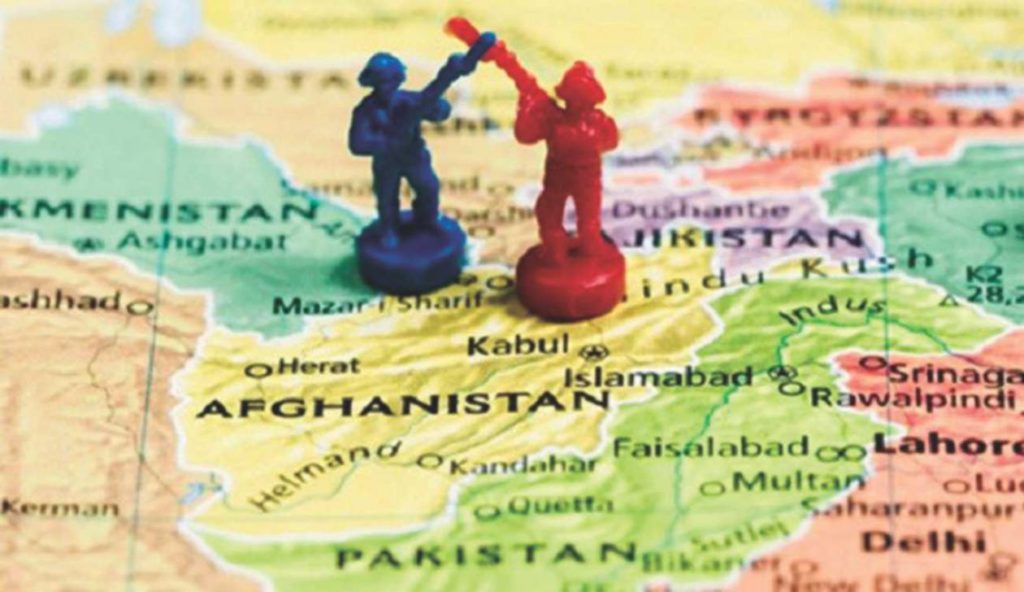
But the tragedy doesn’t end here. Through their actions, the Americans have created a cultural disaster for the Afghanis. The bulk of the Afghan people adhered to a conservative Muslim religion within the context of an almost feudal, tribal society, but they were not extremists.
Their governments had always been basically secular, especially the Taraki government. It was Taraki’s attempt to bring in social and economic changes as well as land reform that riled up the mullahs, who were major landlords and who objected to all change.
The CIA then brought in the extremist zealots from the Middle East and together with Pakistani extremists, the mujahedeen were created. The Pakistanis, with U.S. support, taught thousands of young Afghan boys in their madrasa religious schools to become the devout Taliban.
Once in power, the Taliban established these schools in Afghanistan. Equally important, while the mujahedeen and the Taliban were in power, they systematically killed off or forced into exile all progressive-minded people, especially anyone suspected of being a socialist or a Marxist.
So, the effect of the CIA involvement has been to incubate in Afghanistan two religious-based factions, with a philosophy of foreign origin—the mujahedeen and the Taliban—and at the same time to eliminate almost all progressive-minded people.
In effect, over a period of years, the Americans systematically undermined the prospects of any progressive secular form of government in Afghanistan—for the foreseeable future.
So this is what we now have in Afghanistan, two factions in what is turning out to be a civil war. Moreover, the majority of the people, seeing no improvement in their daily lives, want all the foreigners out. In fact, for many people, the Soviets have simply been replaced by the Americans – and they make no distinction between Americans and any of their NATO allies.
The UN and the various aid agencies and NGOs, while trying to help, create major problems in the course of their operations. A good deal of their aid has been wasted, and they’ve contributed to the people’s poverty by creating inflation (16% in 2005) and increasing the cost of living—prices of mutton have quadrupled.[30]
In a recent report for the Overseas Development Institute, Ashraf Ghani, the chancellor of Kabul University and former Karzai finance minister, has stated that in 2002 about 90 percent of the $1 billion spent on 400 aid projects was wasted.[31]
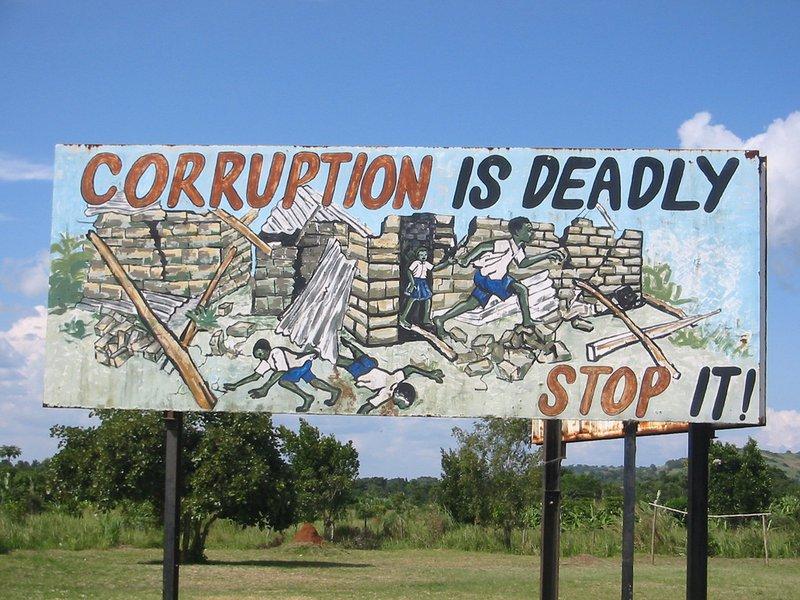
The report cites a series of problems. The country’s 280,000 civil servants earn an average of $50 a month, while about 50,000 Afghans work for aid organizations where the support staff earn up to $1000 a month.
With more than 2,400 aid agencies and NGOs registered in the country, the government is having difficulty trying to hold on to its staff. The report is filled with examples of waste and inefficiency. Where the Afghan government could build a school for about $40,000, an international aid agency undertook the task of building 500 schools, at a cost of $250,000 each.
The Afghan government would hire local contractors, but the aid agencies spend 80 percent of the funds on foreign technical assistance and imported staff and supplies.
Another example is the highway that was built between Kabul and Kandahar which the Afghan government estimated would cost $35 million if they built it—it was eventually built by the U.S. Agency for International Development (USAID) at a cost of more than $190 million.

Also the best and sometimes the only decent housing goes to foreign staff (3-4,000 foreign civilians), and this raises rents to levels that ordinary people can’t afford—in some areas up to 1000 percent.[32]
Hence thousands of Afghanis continue to live in the bombed-out rubble of much of Kabul, which somehow has not been a priority for reconstruction with low-cost housing.
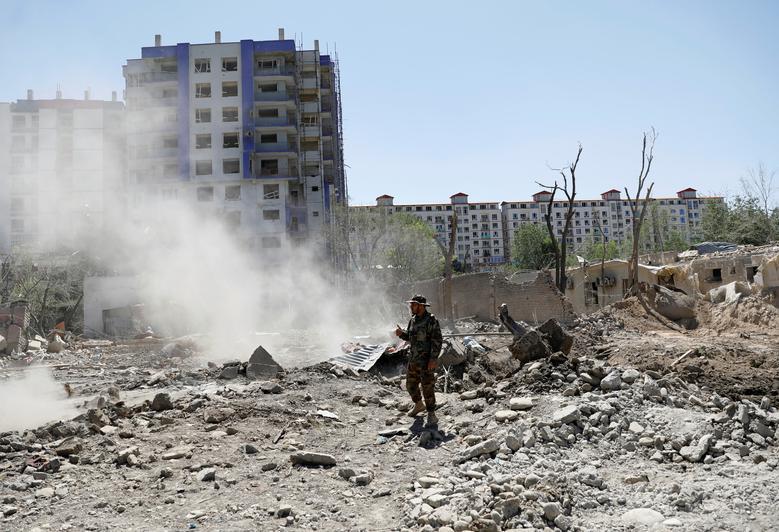
Expensive foreign contractors and consultants often duplicate or replace work that could be done by the Afghan government. Some of the foreign experts refuse to teach their skills to Afghan counterparts, because in time it would do away with their own jobs.
Another recent report on Afghanistan’s “reconstruction” written by Fariba Nawa, an Afghan-American journalist, is devastating and “confirms that Afghanistan has been ‘Enron-ized’ by the Bush administration.”[33]
The report states that foreign contractors “make as much as US$1,000 a day, while the Afghans they employ make $5 per day.” It reveals that the USAID “gives contracts to American companies (and the World Bank and IMF give contracts to companies from their donor countries) who take huge chunks off the top and hire layers and layers of subcontractors who take their cuts, leaving only enough for sub-par construction.”
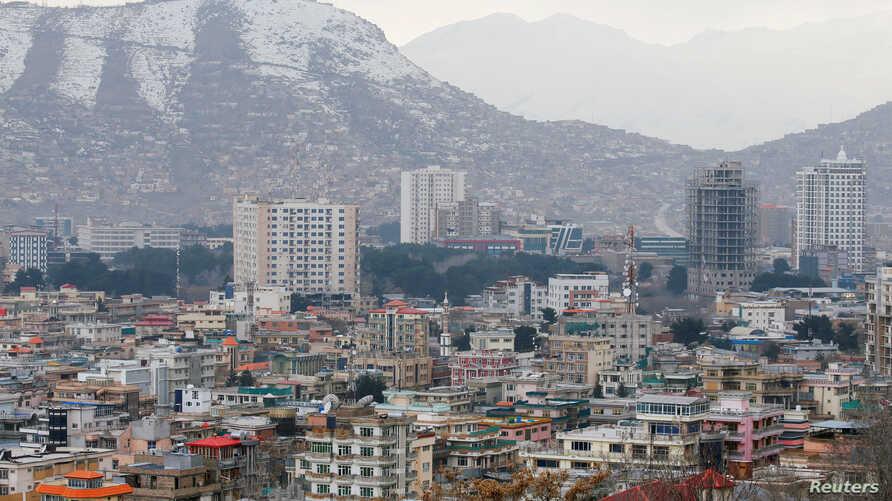
The result is collapsing hospitals, clinics and schools, rutted and dangerous new highways, and “help” for farmers that leaves many of them worse off than before. Overall, countless millions have been wasted through misdirection, inefficiency, and corruption—leaving in its wake an alienated Afghan population.
The reality is that the bulk of the people continue to languish in grinding poverty, with less clean water and electricity than before the war. The aid agencies have helped, but at great cost, and they have not endeared themselves to the local people.
After almost five years of occupation and “$8 billion of poorly managed development aid, a significant number of Afghans have grown tired of the ‘international community’ and its military occupation.”[34]
As for that military presence, despite the 32,000 American and NATO troops, there has been a steady deterioration of security for civilians—and a growing fury at American air strikes that have killed hundreds of innocent civilians and the occurrence of “coalition-led house searches, random detentions and last year’s revelations of torture at Bagram air base.”[35]
In his position as the Director General of Pakistan’s Inter-Services Intelligence, Hamid Gul, has followed developments in Afghanistan for years. In a recent interview this was his grim assessment:
When this sort of mass resistance starts, it means it is a collective decision of the Afghans. So, you can see that though the Taliban resistance is centered in a very specific area, sporadic incidents have erupted all over . . . This is the tip of the iceberg you are watching; the situation will further escalate as the whole environment is now conducive to resistance. . . . The jirgas are unanimous: there will be all-out war in Afghanistan.[36]

Given this situation, there is no easy solution to the Afghan problem. Historically, the British were defeated with the loss of thousands of lives, and so were the Soviets.
Somewhat surprisingly, even President Karzai has recently become sharply critical of the American-led occupation and the “anti-terror strategy,” saying, “I strongly believe . . . that we must engage strategically in disarming terrorism by stopping their sources of supply of money, training, equipment and motivation. It is not acceptable for us that in all this fighting, Afghans are dying. In the past three to four weeks, 500 to 600 Afghans were killed. [Even] if they are Taliban, they are sons of this land.”[37]
Karzai’s sensible offer of an amnesty to the Taliban in 2003 had been rejected, but this may be the only solution.
Much of Afghanistan is now in a state of chaos and civil war. There is no such thing as peace-keeping in the country. The war will rage on indefinitely and in time the entire Afghan population will rise up to throw out the foreigners. Rather than wait for that, the Americans and all their supporters should get out, totally—in the way that they should get out of Iraq. Although it’s the Americans that created the disaster to begin with—in both countries—it seems it will have to be the indigenous people to somehow resolve the problems.

-
Declan Walsh, “UN Report Accuses MPs of Terror and Massacres,” The Guardian, June 12, 2006. http://www.guardian.co.uk/afghanistan/story/0,,1795546,00.html ↑
-
Although a number of sources have maintained that Hamid Karzai had once acted as a consultant or an adviser to the American oil company Unocal, both the company and Karzai have denied this. The denial may be true, but it may be that his work was laundered through sub-contractors so it would be difficult to prove. Le Monde in a December 5, 2002, profile of Karzai stated: “After studying law in Kabul and India, he completed his training in the United States where he was for a time a consultant for the American oil company Unocal, when it was studying the construction of a pipeline in Afghanistan.” Le Monde has refused to retract the story. The claim had also been made in January 2002 in Le Monde diplomatique by senior writer Pierre Abramovici in a major article, “The US and the Taliban: A Done Deal,” which concludes with: “It then emerged that during the negotiations over the Afghan oil pipeline, Karzai had been a consultant for Unocal.” The article is available at http://www.christusrex.org/www1/icons/abramovici.html. Other equally significant articles abound: Wayne Madsen, “Afghanistan, the Taliban, and the Bush Oil Team,” Centre for Research on Globalization, January 23, 2002. Madsen claims that Karzai not only worked as a senior adviser to Unocal but for years had close relations with CIA Director William Casey http://globalresearch.ca/articles/MAD201A.html; Ilene R. Prusher, Scott Baldauf, and Edward Girardet, “Afghan Power Brokers,” Christian Science Monitor, June 10, 2002 http://www.csmonitor.com/2002/0610/p01s03-wosc.htm; Umberine Syed, “Oil Power Shines Bright: The Wealth of Central Asia,” IslamOnLine.net http://www.islamonline.net/English/Views/2002/01/article5.shtml ↑
-
A short account and the text of the agreement appears in: “Turkmen-Afghan-Pakistani gas pipeline accord published,” Alexander’s Gas & Oil Connections, Volume 7, Issue # 13, June 27, 2002. http://www.gasandoil.com/goc/news/nts22622.htm ; Faraz Hashmi, “Trilateral gas pipeline agreement signed: Musharraf, Niyazov & Karzai vow to boost trade,” Dawn Internet Edition, May 31, 2002. http://www.dawn.com/2002/05/31/top1.htm ; Rory McCarthy, “Pipe Dream,” The Guardian, May 31, 2002. http://www.guardian.co.uk/elsewhere/journalist/story/0,,725433,00.html ↑
-
Fred Halliday, “Revolution in Afghanistan,” New Left Review, No. 112, pp. 3-44, 1978; also cited in William Blum, Killing Hope: US Military and CIA Interventions Since World War II, Monroe, Maine: Common Courage Press, 1995, p. 340. ↑
-
Jonathan Neale, “The Afghan Tragedy,” International Socialism, 2:12, Spring 1981, from the section “Afghan Society” http://www.marxists.de/middleast/neale/afghan.htm#top ↑
-
All these reforms and government measures were explained to me at considerable length by the Dean of Agriculture and some of the professors during a lengthy session at Kabul University. ↑
-
Blum, op. cit., p. 351. ↑
-
The Economist (London), September 11, 1979, p. 44. The article notes that during the first year and a half of the new government “no restrictions had been imposed on religious practice.” ↑
-
Newsweek, April 16, 1979, p. 64, acknowledges that the mullahs were rich landowners; New York Times, April 13, 1979, p. 8, includes the comment that the religious issue “is being used by some Afghans who actually object more to President Taraki’s plans for land reforms and other changes in this feudal society.” ↑
-
Eqbal Ahmad, “Terrorism: Theirs and Ours” (A Presentation at the University of Colorado, Boulder, October 12, 1993) http://www.sangam.org/ANALYSIS/Ahmad.htm; Cullen Murphy, “The Gold Standard: The quest for the Holy Grail of equivalence,” Atlantic Monthly, January 2002 http://www.theatlantic.com/doc/prem/200201/murphy ↑
-
Blum, op. cit., p. 343; “How the CIA turns foreign students into traitors,” Ramparts (San Francisco), April 1967, pp. 23-24; Phillip Bonosky, Washington’s Secret War Against Afghanistan, New York: International Publishers, 1985, pp. 33-34; The Truth About Afghanistan: Documents, Facts, Eyewitness Reports, Moscow: Novosti Press Agency Publishing House, 1980, pp. 83-96; Washington Post, December 23, 1979, p. A8. ↑
-
Blum, p. 343; Bonosky, p. 52. ↑
-
The Truth About Afghanistan, op. cit., pp. 91-92. ↑
-
Ibid. ↑
-
Washington Post, December 23, 1979, p. A8. Soviet troops had started arriving in Afghanistan on December 8, to which the article states: “There was no charge [by the State Department] that the Soviets had invaded Afghanistan, since the troops apparently were invited.” ↑
-
“How Jimmy Carter and I Started the Mujahideen”: Interview of Zbigniew Brzezinski, Le Nouvel Observateur (France), Jan 15-21, 1998, p. 76 http://www.counterpunch.org/brzezinski.html ↑
-
Ahmed Rashid, “The Taliban: Exporting Extremism,” Foreign Affairs, November-December 1999. http://www.foreignaffairs.org/background/terrorism—currently the full text of the article is in: http://www.ratical.org/ratville/CAH/Rashid99.html ↑
-
Washington Post, May 11, 1979, p.12. The story reports that a “favourite tactic” of the mujahedeen was “to torture victims [often Russians] by first cutting off their noses, ears, and genitals, then removing one slice of skin after another,” leading to “a slow, very painful death”; Washington Post, January 13, 1985. The article describes Russian prisoners caged like animals and “living lives of indescribable horror”; John Fullerton, The Soviet Occupation of Afghanistan, (London), 1984, cites a journalist from the Far Eastern Economic Review reporting that “one [Soviet] group was killed, skinned and hung up in a butcher’s shop”—cited in Blum, op. cit., p. 348. ↑
-
D. Zayar, “Afghanistan, Bin Laden and the hypocrisy of American imperialism,” In Defence of Marxism, September 26, 2001. ↑
-
“When the U.S. committed $43 million in aid to Afghanistan in May 2001, it brought the total of U.S. aid to the country that year alone to $124 million,” cited in article by Joseph Farah, “Murray pushed for aid to Taliban before to 9/11,” WorldNetDaily.com, December 26, 2002 http://www.worldnetdaily.com/news/article.asp?ARTICLE_ID=30166 ; “This year, the U.S. allocated $120 million in aid to Afghanistan, including $43 million in food aid during the month of May,” cited in report by James Ridgeway, “Taliban Twists Shrub With Poppy Politics: Bush’s Opium Blender,” Village Voice, June 20-26, 2001 http://www.villagevoice.com/news/0125,ridgeway,25704,6.html; For pipeline negotiations see Le Monde diplomatique article by Pierre Abramovici, “The US and the Taliban: A Done Deal,” which states: “The task of negotiating [a pipeline deal] with the Taliban was given to Christina Rocca, the new assistant secretary of state for South Asian affairs. . . . on 29 July [2001], Christina Rocca held unsuccessful discussions with the Taliban ambassador in Pakistan” http://www.christusrex.org/www1/icons/abramovici.html ↑
-
Diana Johnstone, Fools’ Crusade: Yugoslavia, NATO and Western Delusions, New York: Monthly Review Press, 2002, pp. 61-62; personal communication with Canada’s former ambassador to Yugoslavia, James Bissett. ↑
-
“Taliban repeats call for negotiations,” CNN.com, October 2, 2001, includes comment: “Afghanistan’s ruling Taiban repeated its demand for evidence before it would hand over suspected terrorist leader Osama bin Ladin.” http://archives.cnn.com/2001/WORLD/asiapcf/central/10/02/ret.afghan.taliban/; Noam Chomsky, “The War on Afghanistan,” Znet, December 30, 2001 http://www.globalpolicy.org/wtc/targets/1230chomsky.htm ↑
-
Ed Haas, “FBI says, it has ‘No hard evidence connecting Bin Laden to 9/11’,” Muckraker Report, June 6, 2006. http://www.teamliberty.net/id267.html ↑
-
“Bin Laden says he wasn’t behind attacks,” CNN.com, September 17, 2001. http://archives.cnn.com/2001/US/09/16/inv.binladen.denial/ ↑
-
“Pentagon Releases Bin Laden Videotape: US officials say tape links him to September 11 attacks,” NPR.org, December 13, 2001. http://www.npr.org/news/specials/response/investigation/011213.binladen.tape.html ↑
-
A Google search identifies dozens of articles questioning the authenticity of the December 13, 2001, tape. The following has good photos comparing the real bin Laden with the fake in the tape: “The fake bin Laden video tape,” http://www.whatreallyhappened.com/osamatape.html ; other more recent articles discuss the December 13, 2001, tape as well as another fake tape that came out on January 17, 2006, in which bin Laden implicitly confesses his responsibility for orchestrating the 9/11 attacks: Scholars for 9/11 Truth, “Osama Tape Appears Fake, Experts Conclude,” GlobalResearch.ca, June 1, 2006 http://www.globalresearch.ca/index.php?context=viewArticle&code=SCH20060601&articleId=2555 ; “Osama’s tape: Latest of US fabrications?” Alt.Peace, June 2, 2006. http://groups.google.com/group/alt.peace/browse_thread/thread/47de1d835a560202 ↑
-
Robert Kuttner, editor, American Prospect, November 5, 2001, as cited by Noam Chomsky, op. cit. ↑
-
Chomsky, ibid. ↑
-
Barry Bearak, “Leaders of the Old Afghanistan Prepare for the New,” New York Times, October 25, 2001; John Thornhill and Farhan Bokhari, “Traditional leaders call for peace jihad,” Financial Times, October 25, 2001; “Afghan peace assembly call,” Financial Times, October 26, 2001; John Burns, “Afghan Gathering in Pakistan Backs Future Role for King,” New York Times, October 26, 2001; Indira Laskhmanan, “1,000 Afghan leaders discuss a new regime, BG, October 25, 26, 2001; Noam Chomsky, op. cit. ↑
-
Edward Harris, “Many Afghans resent foreigners’ presence,” Yahoo! News, May 30, 2006. ↑
-
Toby Poston, “Millions of dollars worth of aid money is being wasted,” BBC News, February 26, 2006 http://www.rawa.org/rebuild2.htm ↑
-
Harris, op. cit. ↑
-
William Fisher, “The fall and fall of Afghanistan,” Inter Press Service, May 8, 2006 http://www.e-ariana.com/ariana/eariana.nsf/allArticles/8C6E3E215C3BCAF28725716800501EDA?OpenDocument ↑
-
Christian Parenti, “Fury Over Foreigners,” The Nation, February 7, 2006 http://www.thenation.com/doc/20060220/parenti ↑
-
Ibid. ↑
-
Syed Saleem Shahzad, “The battle spreads in Afghanistan,” Asia Times Online, May 26, 2006 http://www.atimes.com/atimes/South_Asia/HE26Df01.html ↑
-
Tini Tran, Associate Press Writer, “Karzai decries anti-terror strategy,” [AP-CP] Winnipeg Free Press, June 23, 2006, p. A20. ↑
CovertAction Magazine is made possible by subscriptions, orders and donations from readers like you.
Blow the Whistle on U.S. Imperialism
Click the whistle and donate
When you donate to CovertAction Magazine, you are supporting investigative journalism. Your contributions go directly to supporting the development, production, editing, and dissemination of the Magazine.
CovertAction Magazine does not receive corporate or government sponsorship. Yet, we hold a steadfast commitment to providing compensation for writers, editorial and technical support. Your support helps facilitate this compensation as well as increase the caliber of this work.
Please make a donation by clicking on the donate logo above and enter the amount and your credit or debit card information.
CovertAction Institute, Inc. (CAI) is a 501(c)(3) non-profit organization and your gift is tax-deductible for federal income purposes. CAI’s tax-exempt ID number is 87-2461683.
We sincerely thank you for your support.
Disclaimer: The contents of this article are the sole responsibility of the author(s). CovertAction Institute, Inc. (CAI), including its Board of Directors (BD), Editorial Board (EB), Advisory Board (AB), staff, volunteers and its projects (including CovertAction Magazine) are not responsible for any inaccurate or incorrect statement in this article. This article also does not necessarily represent the views the BD, the EB, the AB, staff, volunteers, or any members of its projects.
Differing viewpoints: CAM publishes articles with differing viewpoints in an effort to nurture vibrant debate and thoughtful critical analysis. Feel free to comment on the articles in the comment section and/or send your letters to the Editors, which we will publish in the Letters column.
Copyrighted Material: This web site may contain copyrighted material the use of which has not always been specifically authorized by the copyright owner. As a not-for-profit charitable organization incorporated in the State of New York, we are making such material available in an effort to advance the understanding of humanity’s problems and hopefully to help find solutions for those problems. We believe this constitutes a ‘fair use’ of any such copyrighted material as provided for in section 107 of the US Copyright Law. You can read more about ‘fair use’ and US Copyright Law at the Legal Information Institute of Cornell Law School.
Republishing: CovertAction Magazine (CAM) grants permission to cross-post CAM articles on not-for-profit community internet sites as long as the source is acknowledged together with a hyperlink to the original CovertAction Magazine article. Also, kindly let us know at info@CovertActionMagazine.com. For publication of CAM articles in print or other forms including commercial internet sites, contact: info@CovertActionMagazine.com.
By using this site, you agree to these terms above.
About the Author

John Ryan, Ph.D., is a retired professor of geography and senior scholar at the University of Winnipeg in Canada.
He can be reached at jryan13@mymts.net.

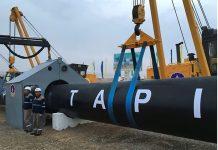


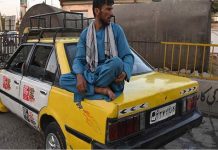
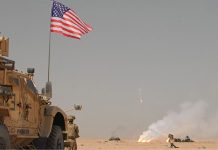


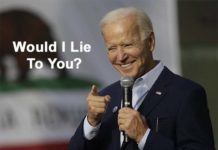
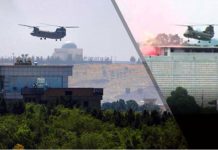
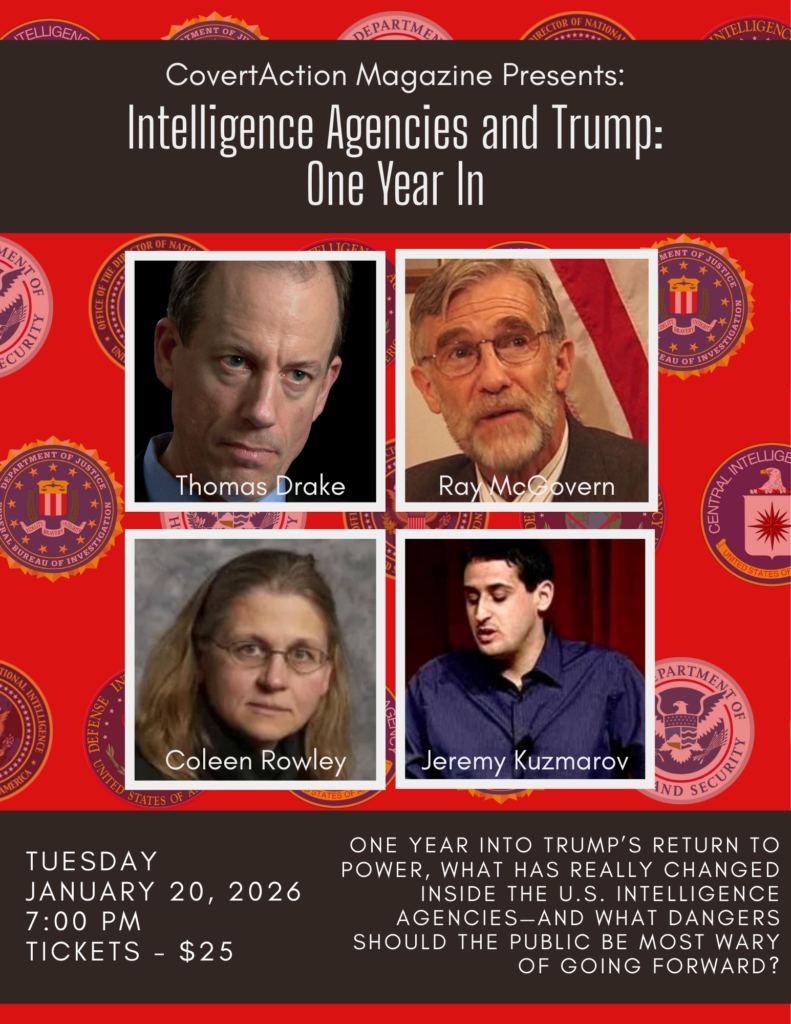
[…] troops to Afghanistan at the Afghan government’s request. The result was the collapse of the progressive Afghan government, the rise of the Taliban and Al Qaeda, and 40 years of war and […]
[…] Afghanistan. Under denna period genomgick Afghanistan dramatiskt positiva förändringar, vilka beskrevs av den kanadensiska akademikern John Ryan som “Afghanistan hade en gång en progressiv […]
[…] destabilize Afghanistan. In this period, Afghanistan was undergoing dramatic positive changes. As described by Canadian academic John Ryan, “Afghanistan once had a progressive secular government, with […]
[…] este período, Afganistán estaba experimentando cambios positivos dramáticos. Como lo describe el académico canadiense John Ryan, “Afganistán alguna vez tuvo un gobierno secular […]
[…] destabilize Afghanistan. In this period, Afghanistan was undergoing dramatic positive changes. As described by Canadian academic John Ryan, “Afghanistan once had a progressive secular government, with […]
[…] destabilize Afghanistan. In this period, Afghanistan was undergoing dramatic positive changes. As described by Canadian academic John Ryan, “Afghanistan once had a progressive secular government, with […]
[…] destabilize Afghanistan. In this period, Afghanistan was undergoing dramatic positive changes. As described by Canadian academic John Ryan, “Afghanistan once had a progressive secular government, with […]
[…] destabilize Afghanistan. In this period, Afghanistan was undergoing dramatic positive changes. As described by Canadian academic John Ryan, “Afghanistan once had a progressive secular government, with […]
[…] Continuité : Taraki, comme Daud Khan, a continué les efforts de “modernisation” qu’Amanullah et Zahir Shah avaient fait. https://covertactionmagazine.com/2021/08/10/afghan-tragedy-still-relev… […]